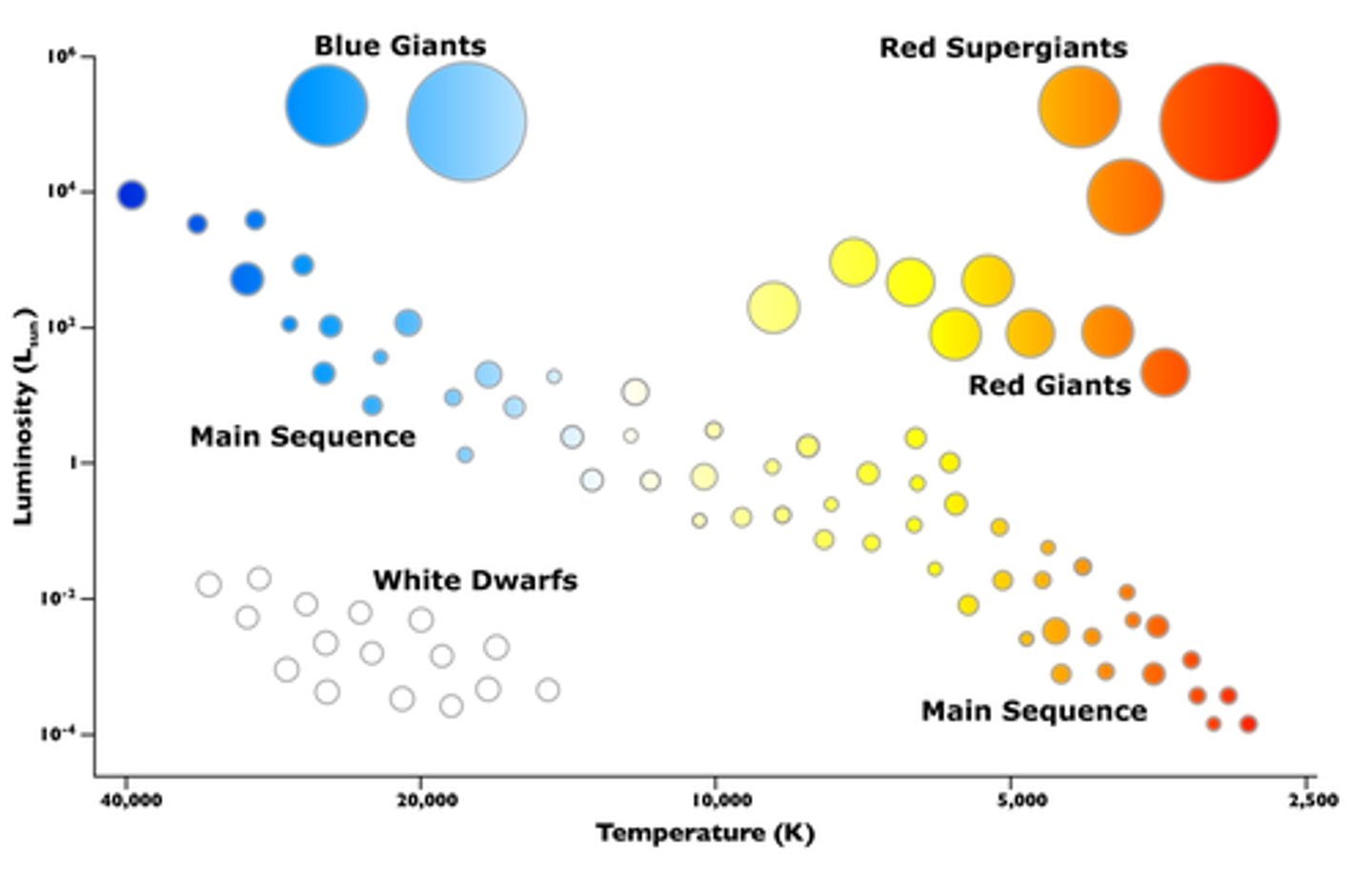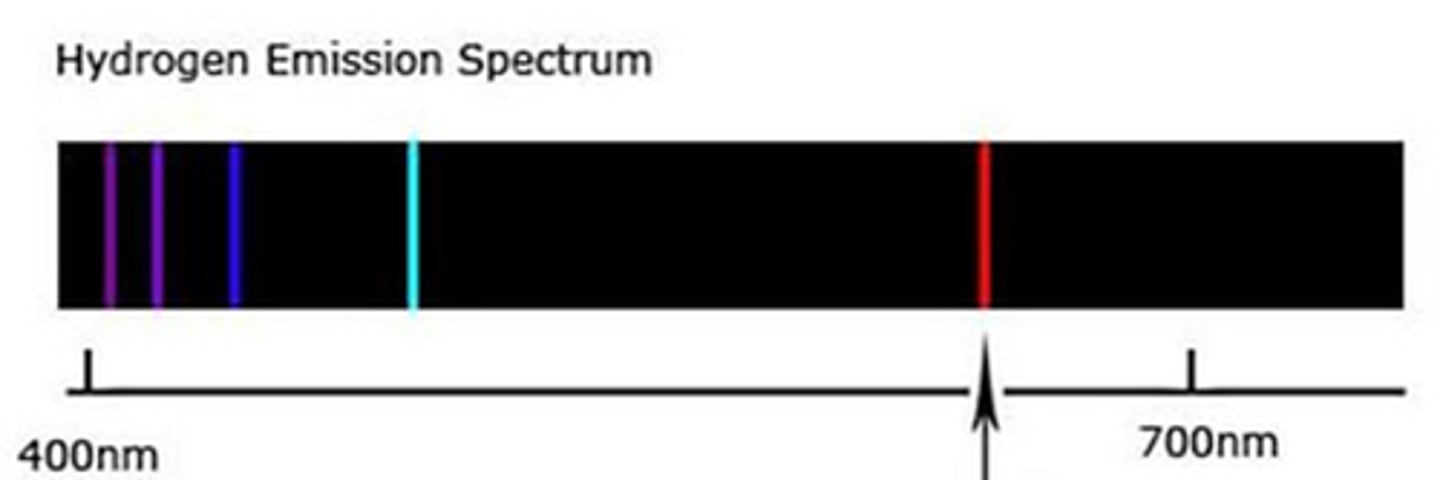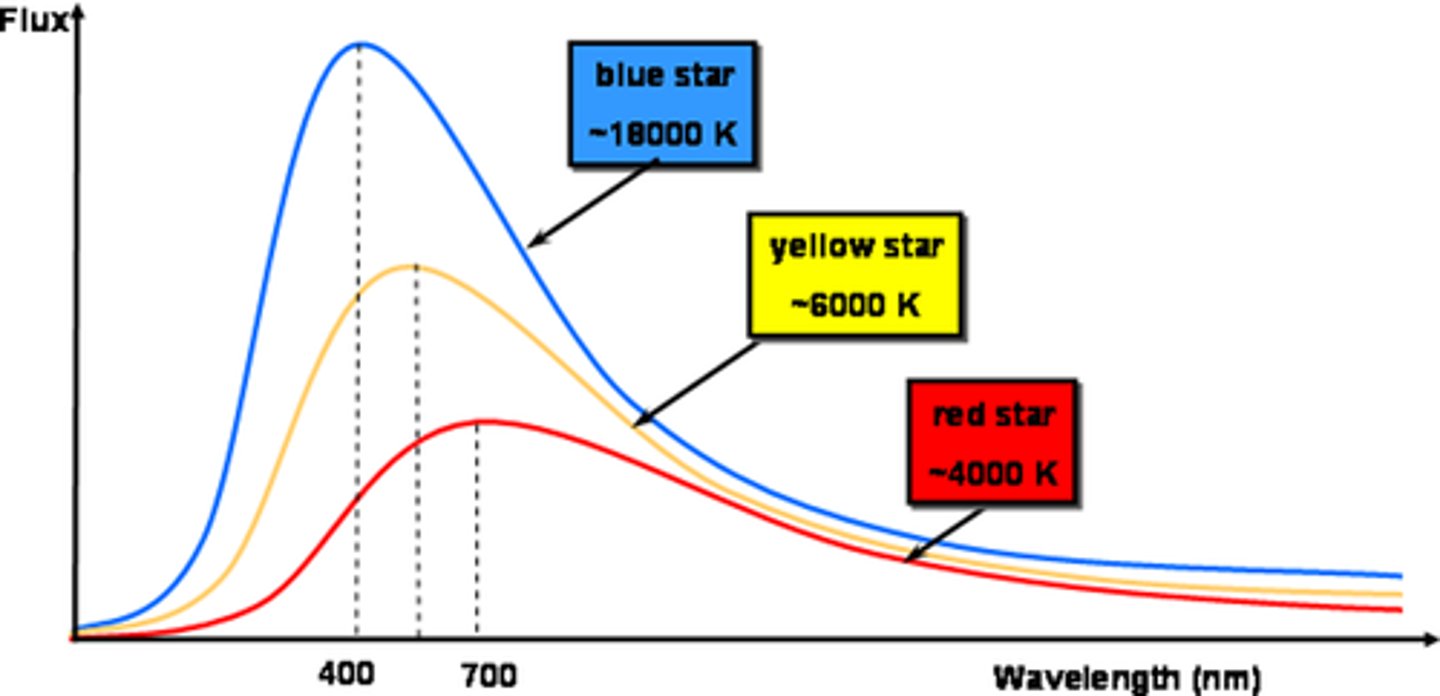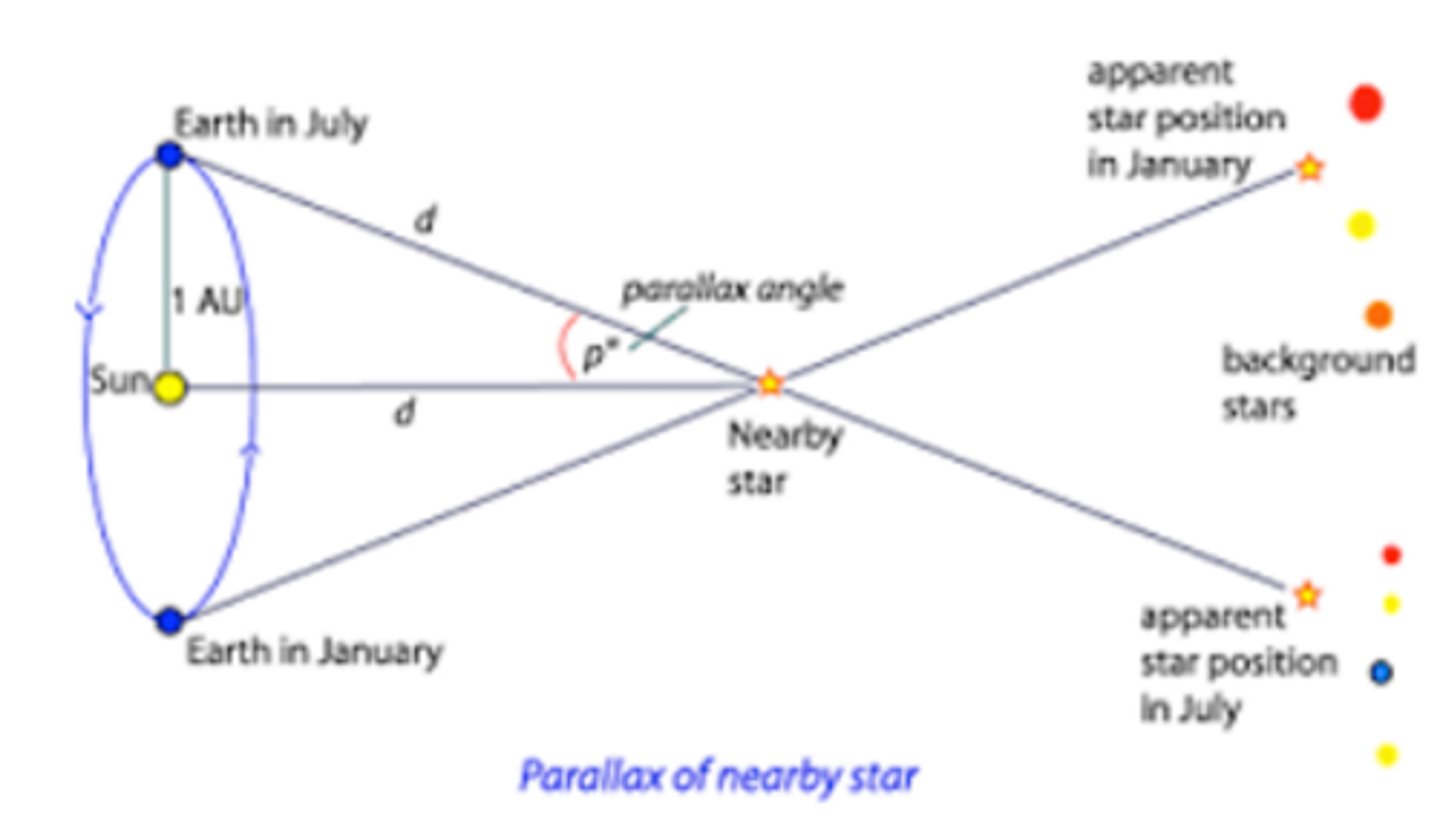StemUp: OCR A A level Physics 5.5: Astrophysics and cosmology
1/93
There's no tags or description
Looks like no tags are added yet.
Name | Mastery | Learn | Test | Matching | Spaced |
|---|
No study sessions yet.
94 Terms
What is the definition of a planet? (2)
These are objects with a sufficient mass for their own gravity to force them to take a spherical shape. The object has no nuclear fusion and has cleared its path of orbit from other objects.
What is the definition of a dwarf planet? (1)
This is a planet that has not cleared its orbital path from other objects.
What is a planetary satellite? (1)
These are bodies that orbit a planet.
What is the definition of an asteroid? (1)
These are small and uneven objects that are too small to be considered planets and have a near circular orbit around the sun.
What is the definition of a comet? (1)
These are balls of ice, rock and dust. They orbit the sun in elliptical orbits.
What is meant by a solar system? (1)
This is a system that contains a star and orbiting planets.
What is meant by a galaxy? (1)
This is a collection of stars, dust and gas. Each galaxy contains approximately 100 billion stars. (e.g the Milky Way).
What is meant by the universe? (1)
This is all existing matter and space as a whole.
What are the steps in the formation of a star? (3)
- Dust and gas particles in nebulas are gravitationally attracted towards each other forming huge clouds. Eventually the cloud becomes too dense and gravitationally collapses to form a protostar (a sphere of hot dense gas and dust.)
- The hydrogen in the protostar overcomes electrostatic repulsion forces (due to high temperatures and pressures) and fuses to form helium, producing a star.
- The gravity of the star is counteracted by the radiation pressure from fusion and gas pressure in nuclei to keep the star in equilibrium and keep it stable.
What is meant by the gravitational collapse of a gas cloud into a protostar? (1)
Dust and gas particles in the protostar are gravitationally attracted to each other and create a hot dense cloud of gas and dust. This collapses to form a protostar which is a sphere of hot dense gas and dust.
What is meant by nuclear fusion? (2)
- This is when hydrogen overcomes electrostatic forces between them due to high pressures and high temperatures and fuses to make helium.
- This happens in the core of stars.
How does a star remain in stable equilibrium? (1)
The gravity of the star is counteracted by the radiation pressure from fusion and gas pressure in nuclei to keep the star in equilibrium and keep it stable.
What stars are classified as low-mass stars? (1)
These are stars that have mass from 0.5 times the mass of the sun to 10 times the mass of the sun.
What is meant by the solar mass? (1)
This is the mass of the sun which is 1.99 x 10^30kg
What are the steps in the evolution of a low-mass star? (3)
- As the hydrogen in the core begins to run out, the gravitational forces overcome the outwards pressure and the star begins to collapse inwards.
- There is now fusion occurring in the outer shell of the star which causes the star to expand outwards again, turning into a red giant.
- As the helium in the star runs out, fusion stops and the outer shell drifts off as a planetary nebula leaving a hot white core known as a white dwarf.
How does a low-mass star turn into a red giant? (2)
- As the hydrogen in the core begins to run out, the gravitational forces overcome the outwards pressure and the star begins to collapse inwards.
- There is now fusion occurring in the outer shell of the star which causes the star to expand outwards again, turning into a red giant.
How does a red giant turn into a white dwarf? (1)
As the helium in the red giant runs out, fusion stops and the outer shell drifts off as a planetary nebula leaving a hot white core known as a white dwarf.
What is a planetary nebula? (1)
When the outer core of a red giant drifts off into outer space, it leaves dust and gas clouds which form planets known as a planetary nebula.
What are the characteristics of a white dwarf? (3)
- It is a very small and dense core.
- It has a temperature of around 3000K where no fusion occurs.
- Heat dissipates from the white dwarf.
What is meant by electron degeneracy pressure? (2)
This is pressure generated from the fact that two electrons cannot exist in the same place. Electrons resist breaking this law causing pressure and this keeps the core of a white dwarf stable.
What is the Chandrasekhar mass? (2)
- This is the condition of mass that the core must be above for the white dwarf to collapse.
- This has a value of 1.44 times the mass of the sun and if the cores mass is above this, it will not collapse.
What stars are classified as high-mass stars? (1)
Any mass above 10 times the mass of the sun are classified as high-mass stars.
What are the steps in the evolution of a high-mass star? (5)
- As the hydrogen supplies and helium supplies deplete, helium fusion can occur due to the extremely high pressure and temperatures found in the star. This causes heavier elements to fuse together forming a red supergiant.
- The red supergiant has many layers of heavy elements with an iron core which cannot fuse further (as iron fusion does not release energy).
- The star becomes unstable and a supernova occurs when there is a shockwave that ejects materials into space and the core will collapse.
- If the core is more than 1.44 times the mass of the sun the core will collapse and make a dense neutron star.
- If the core is more than 3 times the mass of the sun the core will collapse into a black hole where the escape velocity is greater than the speed of light.
How does a red supergiant form from a high-mass star? (2)
- As the hydrogen supplies and helium supplies deplete, helium fusion can occur due to the extremely high pressure and temperatures found in the star. This causes heavier elements to fuse together forming a red supergiant.
- The red supergiant has many layers of heavy elements with an iron core which cannot fuse further (as iron fusion does not release energy).
How does a supernova occur from a red supergiant? (1)
The red supergiant becomes unstable and a supernova occurs when there is a shockwave that ejects materials into space and the core will collapse.
How does a neutron star form from a supernova? (1)
If the core left over from the supernova explosion is more than 1.44 times the mass of the sun the core will collapse and make a dense neutron star.
How does a black hole form from a supernova? (1)
If the core left over from the supernova is more than 3 times the mass of the sun the core will collapse into a black hole where the escape velocity is greater than the speed of light.
What are the characteristics of a neutron star? (2)
- These are very small with a radius of about 3km.
- The core is very hot and dense.
What are the characteristics of a black hole? (2)
- This is an extremely dense singularity.
- They have an escape velocity greater than the speed of light so even light cannot escape a black hole.
What is a Hertzsprung-Russel (HR) diagram and what does it look like? (2)
These are diagrams that show the stellar luminosity of a star against its temperature. It looks like:

How can a Hertzsprung-Russel (HR) diagram be used to identify stars? (1)
From the diagram:
Different types of stars can be identified.

What is meant by electron energy levels? (2)
- Electrons can only exist in discrete energy levels and cannot have a value of energy between these levels.
- The discrete energy levels are unique for each element.
Why do electron energy levels have negative values? (1)
- The negative sign represents the energy required to remove the electron from the atom.
- An electron completely free from the atom has an energy equal to 0.
How are emission spectral lines formed in terms of electron energy levels? (2)
- An electron receives an input of external energy (e.g heat or photon absorption) and is excited to a higher energy level.
- When an electron is de-excited it moves down to a lower energy level and emits a photon with a specific wavelength and frequency forming an emission line.
What is meant by excitement and de-excitement of electrons? (2)
- Excitement is when an electron gains energy and moves to a higher energy state.
- De-excitement is when an electron loses energy and moves to a lower energy state.
How can electrons become excited? (1)
This is through an input of external energy such as heat transfer or absorption of a photon.
What is the equation for the change in energy levels? (2)
- As a photon is emitted during a decrease in energy levels, the change in energy levels is given as: ∆E = hf with a specific frequency giving a specific change in energy levels for a specific element.
As f = c \ λ this can be rewritten as ∆E = hc / λ
What is an emission line spectra and what does it look like? (1)
This is a series of coloured lines on a black background produced through unique emission lines from each element. It looks like:

What is an absorption line spectra and what does it look like? (1)
These are represented by black lines on the continuous spectrum which represent what wavelengths specific elements can absorb. It looks like:

What is a continuous line spectra and what does it look like? (1)
This is where all visible wavelengths are present (produced by atoms of solid heated metals). It looks like:

What is meant by spectroscopy and what is it used for? (2)
- This is a technique used to identify elements based on the wavelengths emitted when the element is excited.
- The emission line is observed and the unique element identified based on what wavelengths it emits.
How are diffraction gratings used to determine the wavelength of light? (2)
- Diffraction gratings are regularly spaced slits that can diffract light at different angles and produce an interference pattern of bright and dark fringes.
- The equation d sin θ = nλ can be used to determine the wavelength. (Look at Practical PAG 5.2)
What does Wien's displacement law state? (1)
This states that: the black body radiation curve for different temperatures peaks at a wavelength inversely proportional to the temperature of the object.
What does a black body radiation curve look like? (1)

What does Wien's displacement law tell us about black body radiation curves? (1)
It tells us that at specific temperatures, the intensity of the light peaks at different values of wavelengths.
What is the formula for Wien's displacement law? (2)
- This is given by: λ_max = b / T
- Where λ_max is the wavelength where maximum intensity occurs (m), b is Wien's constant (2.9 x 10^-3mK) and T is the peak surface temperature of the object (K).
What is meant by the luminosity of a star? (1)
This is the radiant power output of a star, measured in Watts (W).
What does Stefan's law state? (1)
This states that: for a black body, the total luminosity of a surface is proportional to the fourth power of its absolute temperature.
What is the equation for Stefan's law? (2)
- This is given by: L = 4πσ r^2T^4
- Where L is the luminosity of the object (W), σ is the Stefan constant (5.67 x 10^-8 Wm^-2K^-4), r is the radius of the object (m) and T is the surface temperature of the object (K).
How can Wien's displacement law and Stefan's law be used to estimate the radius of a star? (2)
- If the colour (hence peak wavelength) of a star is known, Wien's displacement law λ_max = b / T can be used to find the absolute temperature of the star in Kelvin.
- Stefan's law L = 4πσ r^2T^4 can then be used with a known luminosity to estimate the radius of the star.
What is an astronomical unit (AU)? (1)
This is the average distance from the earth to the sun. 1 AU = 1.5 x 10^11m
What are astronomical units (AU) used for? (1)
They are mostly used to express the distance of planets, asteroid, comets and dwarf planets from the sun.
What is a light year (ly)? (1)
This is the distance light travels over 1 year. 1 ly = 9.46 x 10^15 m
What are light years (ly) used for? (1)
They are used in measuring the distances to stars and other galaxies.
How can angles be measured in arcseconds? (1)
- Angles can be measured in arcseconds for very small fractions of angles.
- In one degree there are 3600 arcsecond. So 1 arcsecond is 1/3600th of a degree.
What is meant by a Parsec (pc)? (1)
This is defined as the distance at which a radius of 1 AU subtends an angle of 1 arcsecond.

What is meant by stellar parallax? (1)
This is the apparent shift in position of an object across a background of distant objects that don't appear to move.
How is stellar parallax used to measure distances? (3)
- The shift in position of the object being measured is recorded over a period of time where the Earth will be in the opposite position of its orbit (every 6 months).
- The parallax angle is measured as shown in diagram:
- The distance is found using the parallax formula: d = 1 / p where d is measured in parsecs and p is measured in arcseconds.

What is the parallax formula? (1)
This is given by d = 1 / p where d is measured in parsecs and p is measured in arcseconds.
When is the parallax method to find distances valid? (1)
It is valid for distances of up to 100 parsecs because beyond this the parallax angle is too small to accurately measure.
What is the cosmological principle? (1)
This states that the universe is isotropic and homogenous, and the laws of physics are universal.
What does the homogeneity of the universe mean? (1)
The universe is homogeneous so matter is uniformly distributed across the universe. This means that for a large volume the density is the same.
What does the universe being isotropic mean? (1)
This means that the universe is the same no matter which direction we look. It has no centre of edge.
What is meant by the Doppler effect? (2)
- This is the apparent shift in wavelength occurring when the source of the waves is moving.
- If it moves towards the observer the wavelength appears to decrease, if it moves away from the observer the wavelength appears to increase.
How does the Doppler effect affect star light? (1)
The position of spectral lines in an emission spectra is shifted because the source (star) and the observer (Earth) are moving.
How can the Doppler effect be used to determine a stars velocity? (2)
- Compare the emission spectra of hydrogen from the star to the same one from a lab on Earth.
- Use the Doppler equation: ∆λ / λ = v / c to find the velocity of the star (v).
What is the Doppler equation? (2)
- This is given by: ∆λ / λ = v / c
- Where ∆λ is the change in wavelength from the emission line from the star compared to the one on Earth (m), λ is the original wavelength of the hydrogen spectral line (m), v is the speed of the star (ms^-1) and c is the speed of light (3 x 10^8 ms^-1)
What does Hubble's law state? (2)
- This states that the recessional velocity (v) of a galaxy is proportional to its distance from earth.
- As the distance increases, the velocity increases.
What is the equation for Hubble's law? (2)
- This is given by v = H_0 d
- Where v is the velocity of the star (ms^-1), d is the distance the star is from Earth (m) and H_0 is the Hubble constant (67.8 kms^-1 Mpc^-1)
How can Hubble's constant be expressed? (2)
- It is equal to 67.8 kms^-1 Mpc^-1
It can also be expressed as 2.3 x 10^-18 s^-1 in S.I. units
What is meant by red shift? (1)
The wavelength of light from stars is being stretched so the light seems to appear redder.
What does red shift tell us about the universe? (3)
- More stars are being red-shifted which tells us their velocity from the Earth is high from the Doppler equation.
- Using Hubble's law, as the speed is greater, the distance is greater.
- This tells us the universe is expanding over time.
What does the Big Bang theory state? (1)
This states that all matter was contained in a singularity point which suddenly expanded outwards to form the universe which has not stopped expanding since.
What are the pieces of evidence for the Big Bang theory? (2)
- The universe is expanding due to red shift as shown by Hubble's law.
- Microwave background radiation all through space.
What is microwave background radiation? (2)
- This is where high energy gamma photons from the big bang were stretched into the microwave region of wavelength.
- This is found all throughout space at a temperature of 2.7K and is a piece of evidence for the big bang.
What is meant by the expansion of space-time? (1)
This is the constant expansion of the universe which started from the Big Bang.
What is the timeline of the evolution of the universe since the Big Bang? (9)
- 10^-35 seconds after the Big Bang the universe rapidly expands, there are only high energy photons here, there is no matter yet. This is known as the period of inflation.
- 10^-6 seconds after the Big Bang, the first fundamental particles gain mass.
- 10^-3 seconds after the Big Bang, Hadrons are formed from quarks.
- 100 seconds after the Big Bang, protons and neutrons fuse to make light nuclei such as Helium nuclei.
- 380 thousand years after the Big Bang, it is now cool enough for many atoms to form.
- 30 million years after the Big Bang, stars begin to form and fusion creates heavier elements.
- 200 million years after the Big Bang, our galaxy (The Milky Way) begins to form.
- 9 billion years after the Big Bang, our solar system forms with the sun and the Earth 1 billion years later.
- 13.7 billion years after the Big Bang, the present day.
What is meant by the period of inflation? (1)
This is 10^-35 seconds after the Big Bang where the universe rapidly expands, there are only high energy photons here, there is no matter yet.
When did the first fundamental particles gain mass in the universe? (1)
10^-6 seconds after the Big Bang
When were the first Hadrons formed in the universe? (1)
10^-3 seconds after the Big Bang
When did the first nuclei form in the universe? (1)
100 seconds after the Big Bang, protons and neutrons fuse to make light nuclei such as Helium nuclei.
When did the first atoms form in the universe? (1)
380 thousand years after the Big Bang, it is now cool enough for many atoms to form.
When did the first stars form in the universe? (1)
30 million years after the Big Bang, stars begin to form and fusion creates heavier elements.
When did the Milky Way begin to form? (1)
200 million years after the Big Bang, our galaxy (The Milky Way) begins to form.
When did the Solar System begin to from? (1)
9 billion years after the Big Bang, our solar system forms with the sun and the Earth 1 billion years later.
How can the age of the universe be estimated? (2)
- The distance of a galaxy from Earth and its speed must be related to the time taken to move this distance as according to the Big Bang all matter was initially at the same point.
- This is equal to d/v which is also equal to 1 / H_0 with H_0 being the Hubble constant.
What is the estimated age of the universe? (1)
This is approximately 14 billion years with the best estimates at 13.7 billion years.
What is meant by dark energy? (1)
This is a hypothetical form of energy which is accelerating the rate of expansion of the universe. It makes up 68% of the universe.
What is meant by dark matter? (1)
This is mass spread out from galaxies that cannot be detected by electromagnetic radiation but can be detected by the gravitational effect it has on objects. It makes up 27% of the universe.
What is the composition of the universe? (3)
- Dark energy makes up 68%
- Dark matter makes up 27%
- Ordinary matter and energy only makes up 5%
What is meant by an open universe? (1)
This is an idea for the future of the universe where it will expand indefinitely.
What is meant by a closed universe? (1)
This is an idea for the future of the universe. At one point it will stop expanding and begin contracting, eventually collapsing on itself.
What is meant by a flat universe? (1)
This is an idea for the future of the universe where it will stop expanding eventually and remain a fixed size.
What is the future of the universe? (1)
The future could be open, closed or flat depending on the density of the universe. However it is currently unknown.